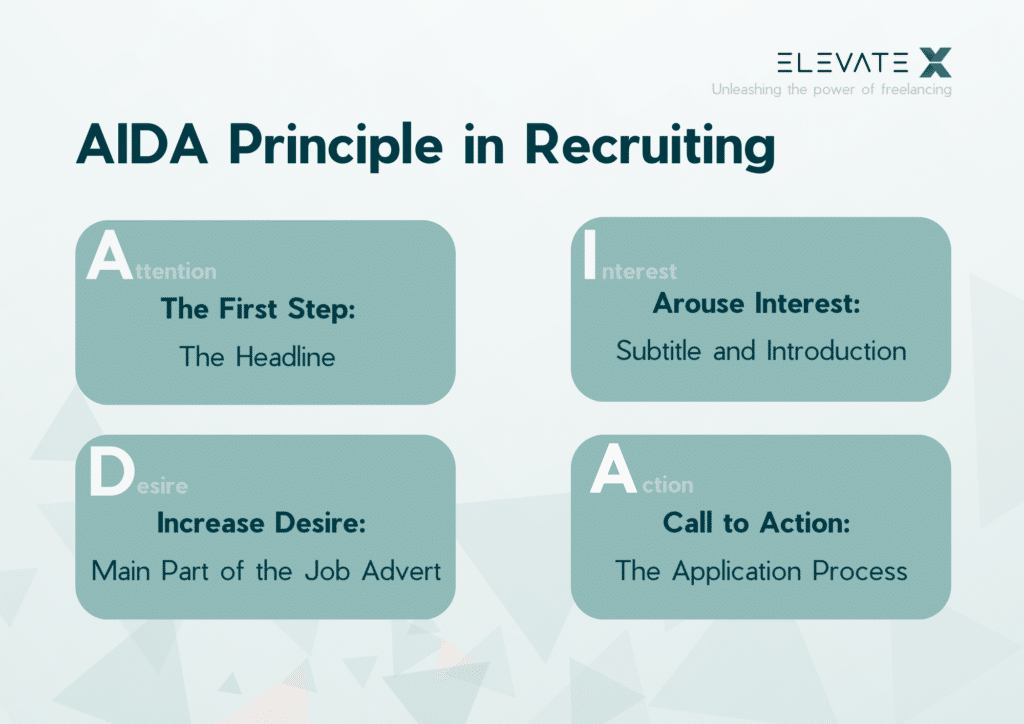A study by StepStone shows that 50% of applicants abandon their applications because important information was missing in the job advertisement. This underscores the immense importance of a well-thought-out and appealing ad. But how exactly do you write such a job advertisement that not only attracts attention but also attracts the right candidates?
Why Should You Write a Good Job Advertisement?
In the digital age, it’s not surprising that over two-thirds of applicants start their job search on online job boards (according to a 2017 StepStone study). Statistics from Statista show that 34 percent of all new employees are found via online job boards and around 30 percent through company websites.
This demonstrates that online job advertisements are the most important medium for companies to recruit qualified employees. They are not only a crucial component of successful recruiting but also play a significant role in employer branding. For candidates, they often form the basis for the decision to apply or not.
Those who want to position themselves as attractive employers and win the right employees for open positions must arouse the readers’ interest and clarify as many questions as possible about the job and company in the advertisement. Although job advertisements are one of the most important tools in e-recruiting and university marketing, many companies still rely on standard formulations, which is a clear mistake.
The challenge lies in formulating and designing the job posting in such a way that it attracts exactly the desired candidates. Too specific requirements can unnecessarily limit the number of applicants, while too general advertisements can lead to a flood of unqualified applications. The key is to find a middle ground that attracts the right applicants for the company.
A well-written job advertisement not only improves recruiting and the quality of applicants but also promotes the fit between applicant and company. Moreover, a meaningful ad strengthens employer branding by providing insights into the company culture and showing what distinguishes work at the company.
KEY POINTS
- A study by StepStone highlights that an incomplete job advertisement often leads to the premature end of the application process, underscoring the need for detailed and carefully formulated content.
- Online job advertisements serve as the primary tool for recruitment and are crucial for employer branding, as they significantly influence candidates’ decisions to apply.
- By using the proven AIDA principle, job advertisements can be effectively designed to capture candidates’ attention and motivate them to apply.
Structure of a Good Job Advertisement
The AIDA principle, a concept known from marketing developed by Elmo Lewis in 1898, forms the basis for the structure of an effective job advertisement. It stands for Attention, Interest, Desire, and Action and aims to motivate potential applicants to apply. Each section of the job advertisement fulfills a specific function to guide readers through the process.
Attention: The Headline
The headline is the first thing potential applicants see. It must therefore immediately attract attention. A precise and clear title that clearly describes the position is essential. Avoid buzzwords and internal terms unknown outside your team, as these can impair the findability and understanding of the ad.
Interest: Subtitle and Introduction
In the first sentences after the headline, it’s about deepening the interest further. Answer the question “Who are we looking for?” as precisely as possible. Describe which position is offered, whether it is a full-time or part-time job, an internship, or a working student position, and whether the position is temporary or permanent.
Desire: Main Body of the Job Advertisement
In the main body, you make the position attractive to readers. Introduce your company, describe the tasks, necessary qualifications, and what you can offer applicants. Here, you should answer the 5 W questions: Who are we? What do we expect? Who are we looking for? What do we offer? How can you apply?
Action: The Application Process
At the end of the job advertisement, there is a clear call to apply. Make the application process as simple as possible and provide contact information for inquiries. A direct link to the application form or the provision of an email address to which applications can be sent is helpful here.
Contents of an Effective Job Advertisement
The Title
It must be clear and unambiguous. Avoid unclear job titles that could confuse potential applicants.
Short Company Description
Show what makes your company special and what distinguishes the working atmosphere.
Tasks and Activities
Be specific and avoid general clichés. Potential applicants want to know what to expect.
Requirements and Qualifications
Distinguish between must-haves and nice-to–haves and formulate requirements clearly and precisely.
Job Details and Benefits
Make the company and the position attractive by highlighting special advantages and amenities.
Application Process
Explain clearly how to apply and ensure all necessary information for a straightforward application is available.
A well-structured job advertisement that follows the AIDA principle not only captures the attention and interest of potential applicants but also motivates them to apply. With precise information and a clear structure, you can ensure that your job advertisement reaches and appeals to the right candidates.

Common Mistakes to Avoid in Job Advertisements
Unclear Job Titles: Do not use cryptic or company-internal designations. The job titles should be common and immediately understandable to attract the right applicants and ensure good findability.
Too General Job Descriptions: Avoid vague formulations like “various tasks in the marketing area.” Applicants want to know what specific tasks they will face and whether their skills match the position.
Overloaded Requirement Profiles: An overwhelming list of qualifications and skills can be daunting. Limit yourself to the actually necessary requirements and clearly separate these from the “nice-to-haves.”
Missing Company Information: The job advertisement is also a business card of the company. A missing or meaningless description of the employer offers no incentives for potential applicants.
Ignoring the Target Audience: Not every job advertisement appeals to everyone. It is important to tailor the advertisement to the specific needs and expectations of the target group.
Lack of SEO Optimization: Job advertisements must be optimized for search engines to achieve high visibility. Do not neglect the use of relevant keywords.
Unkept Promises: Avoid exaggerations regarding the company culture or offered benefits that cannot be realized in reality.
Missing Call to Action: A clear call to action (CTA) at the end of the ad is crucial to encourage applicants to submit their documents.
Discriminatory Language: Ensure the advertisement is inclusively formulated and does not exclude potential applicants.
Inadequate Presentation of the Application Process: A clear and uncomplicated application process increases the chance of high-quality applications.
Get your perfect candidate without having to worry about the job advertisement
Dos and Don'ts in a Good Job Advertisement at a Glance
Do’s | Don’ts |
Use the AIDA principle for a structured and appealing presentation. | Create monotonous and generic ads that don’t attract attention. |
Incorporate visual elements like images and videos to make the ad more attractive. | Choose an unattractive layout that doesn’t appeal to potential applicants. |
Optimize the ad for specific target groups and share on suitable platforms. | Choose a too general approach that fails to reach relevant talents. |
Optimize the title for search engines to increase visibility. | Use unclear or misleading titles that impair ranking. |
Observe the General Equal Treatment Act (AGG) to avoid discrimination. | Use discriminatory language or criteria that could cause legal issues. |
Use unique language to stand out from the competition. | Use clichéd phrases and filler words that offer no value. |
Combine lists and narrative text to present information clearly and reader-friendly. | Create cluttered text walls that are off-putting. |
Highlight the employer brand to convey the company culture. | Omit important details about the company culture and working environment. |
Clearly mark requirements as ‘Must-haves’ and ‘Nice-to-haves’. | Set unrealistic expectations that discourage potential applicants. |
Tailor the job ad to the needs of the target group and offer feedback options. | Ignore feedback options and leave no room for inquiries. |
Finding the Right Candidates for Job Advertisements
Not only full-time employees but also freelancers, part-time workers, and remote employees form the backbone of modern organizations. Each type of employment brings its own advantages and challenges and appeals to different groups of applicants.
Permanent Employment
This is the traditional full-time employment with all associated social benefits and securities. It is attractive to candidates looking for stability and long-term career opportunities.
Freelancers/ Independent Contractors
An increasing number of professionals are opting for freelance work. This form of employment offers high flexibility for both companies and freelancers. Especially in project phases or when specialized knowledge is needed, they are a valuable resource.
In today’s working world, freelancers have become indispensable. They offer flexibility and specialized expertise needed for projects or to bridge bottlenecks. If your company is open to working with freelancers, this should be clearly communicated in the job advertisement. Here are key elements that should be highlighted:
Project-related Competencies: Specify exactly what special skills or experiences are required for the project.
Work Flexibility: Describe how freelancers can be used flexibly in terms of time and location.
Integration into Teams: Explain how freelancers will be integrated into existing teams and collaborate with permanent employees.
Supportive Infrastructure: Show which tools and platforms are available to enable smooth collaboration.
Compensation Model: Clarify how freelancers will be compensated for their work, for example, on an hourly or project basis.
Long-term Perspectives: Mention whether and how a long-term collaboration could develop.
In the job advertisement, the added value for freelancers should also be emphasized, such as the opportunity to work on diverse projects, expand networks, or be part of a dynamic company culture, even if they are not permanently employed.
Conclusion
A well-written job advertisement is crucial to attract the right talents for your company. By following the AIDA formula, avoiding common mistakes, and providing clear information about the position and the company, you can create an ad that not only attracts attention but also draws in qualified applicants.
Follow the AIDA formula and ensure that you convey all relevant information about the position, the company, and the application process clearly and precisely.
A good job advertisement is clearly structured, directly addresses the target group, and highlights the company’s uniqueness as well as the advantages of the position.
Place your ad on the right platforms and use keywords that appeal to both permanent employees and freelancers to reach a broad spectrum of talents.








